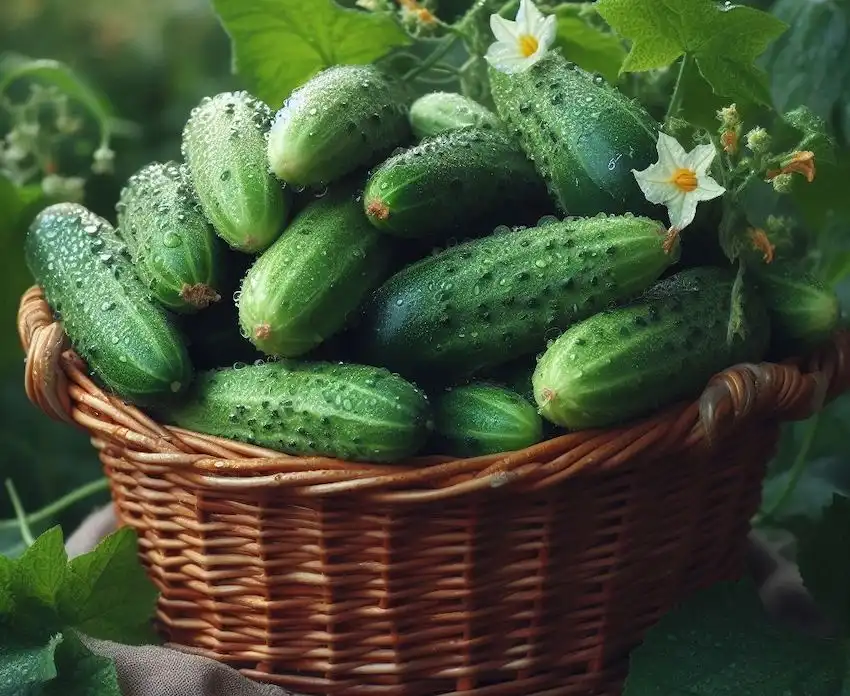Unlocking the Garden’s Secret: Baking Soda for Bountiful Cucumbers

Gardening enthusiasts often seek natural methods to enhance the growth and yield of their plants. Among the myriad of home remedies, one kitchen staple may just be the unexpected hero for your cucumber plants: baking soda.
Baking Soda: The Gardener’s Companion
Baking soda, more commonly associated with baking and cleaning, possesses qualities that can significantly benefit your garden. This pantry item is alkaline in nature, providing antifungal and antibacterial properties that are crucial for plant health.
The Benefits for Cucumbers
Cucumbers, while a favorite summer vegetable, are prone to several pests and diseases, such as powdery mildew, aphids, and spider mites. Baking soda comes to the rescue as a safe and effective remedy that not only tackles these issues but also promotes vigorous growth and fruit development.
How to Use Baking Soda in Your Garden

To harness the benefits of baking soda, incorporate it into your gardening routine as follows:
- Preventative Measures: Applying baking soda solutions before signs of disease or immediately after they appear can prevent further damage. It is crucial to remember that once a disease is widespread, baking soda alone may not be sufficient.
- Creating the Solution: Mix two tablespoons of baking soda in 10 liters of warm water. Enhance this mixture by adding 50 grams of grated laundry soap, which acts as an adhesive, ensuring the solution remains on the leaves for longer.
- Application: Spray the solution on your plants every 10-14 days, focusing on the undersides of leaves to prevent fungal growth. It’s best to spray on a cloudy day or in the evening to avoid leaf burn from the sun.
Strategic Feedings for Optimal Growth
For optimal growth, consider the following feeding schedule:
- Initial Feeding: Once the seedlings are transplanted into the soil, the first feeding accelerates their growth and development.
- Flowering Boost: A second application, 1-2 weeks after the initial feeding, can enhance flowering and increase the number of fruiting bodies.
- Fruiting Phase: The final feeding, conducted in late June or early July, ensures that the cucumbers grow evenly and remain crisp, yielding a more abundant harvest.
Recipes for Success
Here are two simple baking soda recipes for different stages of your cucumber plants’ growth:
- For Growth: In a bucket of warm, settled water, dissolve four tablespoons of baking soda and water the plants.
- During Fruiting: Modify the solution by adding only three tablespoons of baking soda to the bucket of water, with a few drops of 5% pharmaceutical iodine, and spray it onto the foliage.
Always combine these treatments with regular watering and perform them during the cooler parts of the day to avoid stressing the plants.
The Outcome

Incorporating baking soda into your gardening practice can lead to a healthier and more fruitful cucumber harvest. The foliage remains vibrant, and the cucumbers can be enjoyed from the onset of summer until the early days of September, boasting a crispness and sweetness that is the hallmark of a well-tended garden.
Remember, the key to success in any gardening endeavor is consistency and care. By following these steps, you can ensure that your cucumber plants are robust, healthy, and productive.



















